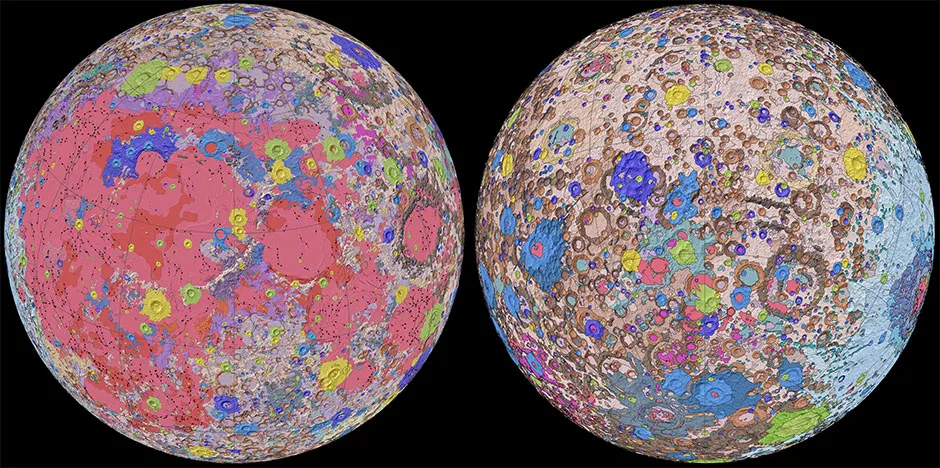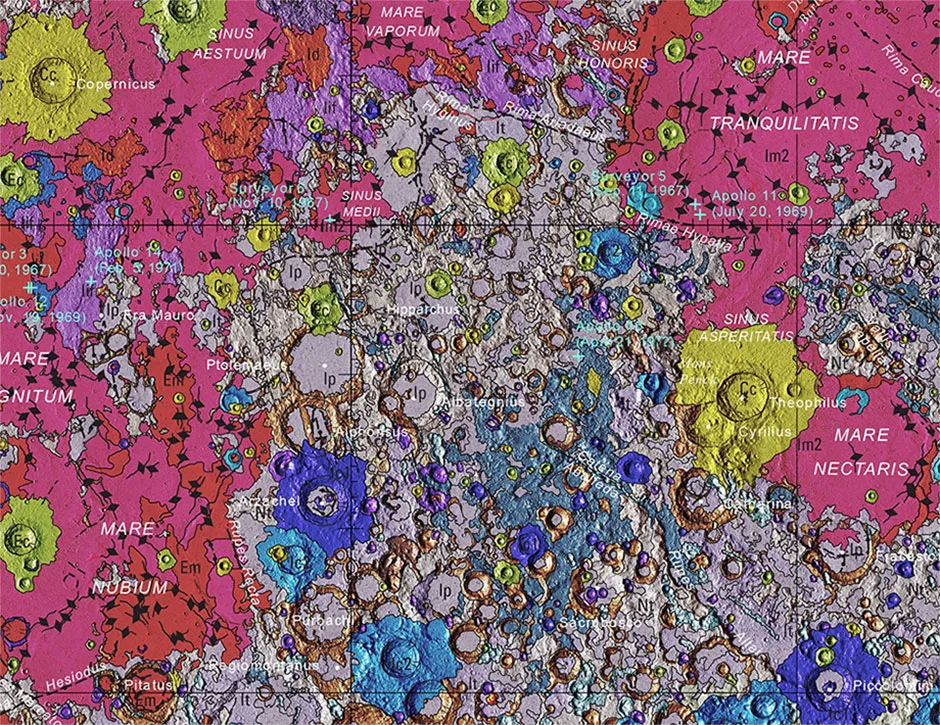
These colourful maps showing the craggy surface of the Moon in exhaustive detail were put together following a mammoth effort by researchers from the US Geological Survey, NASA, and the Lunar Planetary Institute. It is the first time the entire lunar surface has been completely mapped and uniformly classified by scientists.
The lunar map, dubbed the “Unified Geologic Map of the Moon,” will now serve as the definitive blueprint of the Moon’s surface geology for all future human missions to the Moon and will provide an invaluable for scientists studying the 4.5 billion-year-old history of the planet Earth’s nearest neighbour.
The digital map is available online now and shows the Moon’s geology in minute detail on a 1:5,000,000 scale.
“People have always been fascinated by the Moon and when we might return,” said current USGS Director and former NASA astronaut Jim Reilly. “So, it’s wonderful to see USGS create a resource that can help NASA with their planning for future missions.”
Read more about the Moon:
- Why we need to go back to the Moon
- Apollo 13: "We never got to a point where we said, ‘Well, we’re going to die’”
To create the new digital map, the team used information gathered from six Apollo-era regional maps along with updated information from recent satellite missions to the Moon.
Data for the Moon’s equatorial region came from observations collected by the Terrain Camera on the recent SELENE (Selenological and Engineering Explorer) mission led by JAXA, the Japan Aerospace Exploration Agency, while data for the north and south poles was supplemented with NASA’s Lunar Orbiter Laser Altimeter data.

They redrew the existing historical maps by merging them with modern data sets and also developed a new description of the Moon’s rock layers.
“This map is a culmination of a decades-long project,” said Corey Fortezzo, USGS geologist and lead author. “It provides vital information for new scientific studies by connecting the exploration of specific sites on the Moon with the rest of the lunar surface.”
Reader Q&A: Does the Moon look ‘upside down’ in the southern hemisphere?
Asked by: Millie Granger, London
Indeed, the Moon does look ‘upside down’ in the Southern Hemisphere compared to the northern hemisphere. This is simply a matter of orientation.
Imagine if the Moon orbited in the same plane as the equator. If you were in the northern hemisphere, the Moon would always appear in the southern sky since that is the direction of the equator. The reverse is true in the southern hemisphere: the Moon would appear in the northern sky.
So, these two observers are looking at the same object from opposite directions and naturally that means one sees the object flipped compared to the other. This means that the ‘Man in the Moon’ is upside down in the southern hemisphere, and can actually look more like a rabbit.
Read more:
